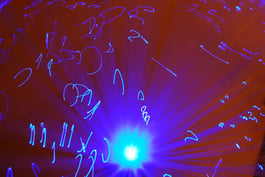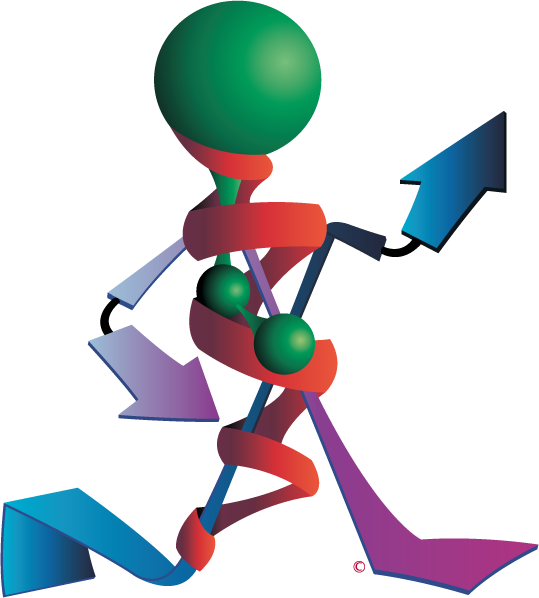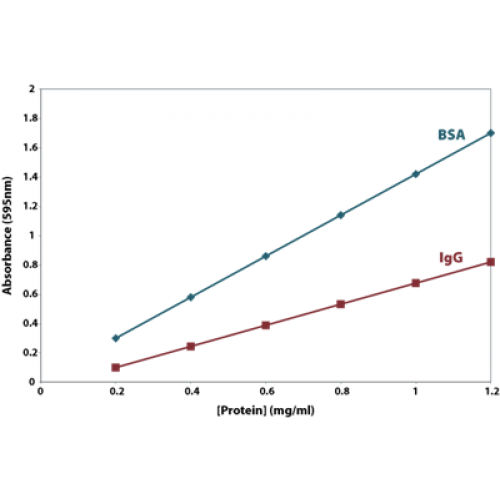 Protein solubility is a key factor for successful 2D gel electrophoresis. Thus, the choice of protein solubilization buffers can greatly affect the results of your experiments. Proteins need to be solubilized during sample preparation and electrophoresis to break the inter- and intra-molecular interactions involved in protein aggregation (e.g. disulfide and/or hydrogen bonds, ionic and/or hydrophobic interactions, and van der Waals forces). Failure to break these interactions may result in sample loss or the formation of experimental artifacts.
Protein solubility is a key factor for successful 2D gel electrophoresis. Thus, the choice of protein solubilization buffers can greatly affect the results of your experiments. Proteins need to be solubilized during sample preparation and electrophoresis to break the inter- and intra-molecular interactions involved in protein aggregation (e.g. disulfide and/or hydrogen bonds, ionic and/or hydrophobic interactions, and van der Waals forces). Failure to break these interactions may result in sample loss or the formation of experimental artifacts.
Proteins in biological samples are usually present in their native state and are often associated with other proteins. Since they are generally not soluble in this condition, they must be denatured to facilitate solubilization. Sample solubilization solutions typically contain chaotropic agents, detergents, buffers, salts, ampholytes, and reducing agents.
Since proteins that have been solubilized during sample preparation should remain soluble throughout the entire electrophoresis process, solubilizing agents are also used during first dimension IEF. This is extremely important since protein aggregation and precipitation often occurs during this step. However, care should be taken to ensure that the solubilizing agents used are compatible with the procedure.
Please take note that any compound present in the rehydration solution should be uncharged or weakly charged. To do this, the concentration of any charged compounds that were used during sample preparation should be reduced through substantial dilution. The same effect can be achieved through dialysis or treatment with an appropriate cleanup kit.
Chaotropic extraction buffers that preserve the native charge of proteins
Chaotropes work by disrupting hydrogen bonds and hydrophobic interactions between and within proteins. When used at high concentrations, these compounds can disrupt secondary protein structures and bring proteins that are not otherwise soluble into the solution.
Urea is one of the most common chaotropes used to solubilize and denature protein molecules. This neutral chaotropic agent is generally used at concentrations between 5M to 9 M. Since thiourea can significantly increase the number of solubilized proteins, it is often added at concentrations up to 2 M when insoluble proteins need to be separated. However, please remember that if you use thiourea during sample preparation, it should also be used in the preparation of first-dimension rehydration solution. This is usually done to prevent proteins that require thiourea for solubility from coming out of solution during IEF.
Urea is also commonly used in the IEF rehydration solution. When used alone, it should be at a concentration of at least 8 M. When used with thiourea, it should be at a concentration of at least 7 M. Please take note that thiourea can cause disturbances in the 2-D pattern at the acidic end of the pH gradient so you need to take this into consideration when deciding if you really need to use this reagent during sample preparation and first-dimension IEF step.
Note: Charged chaotropic agents (e.g. guanidine hydrochloride) are not used since they are not compatible with subsequent IEF.
Despite its valuable role in the solubilization and denaturation of protein molecules, urea can cause carbamylation at the amino terminus of proteins. While urea in solution exists in equilibrium with ammonium cyanate, the presence of heat triggers a reaction between cyanate and the amino groups of proteins and induces a change in their isoelectric point. When this happens, there is a great possibility that the accuracy of your results will be compromised.
So, what should you do to reduce the chances of carbamylation? One effective way to avoid this problem is to make fresh urea-based reagents and treat it to get rid of isocyanic acid (the form that reacts with protein amino groups). To do this, you may need to acidify the urea solution using 100mM HCl or treat it with an ion exchange resin to bulk deionize the solution.






